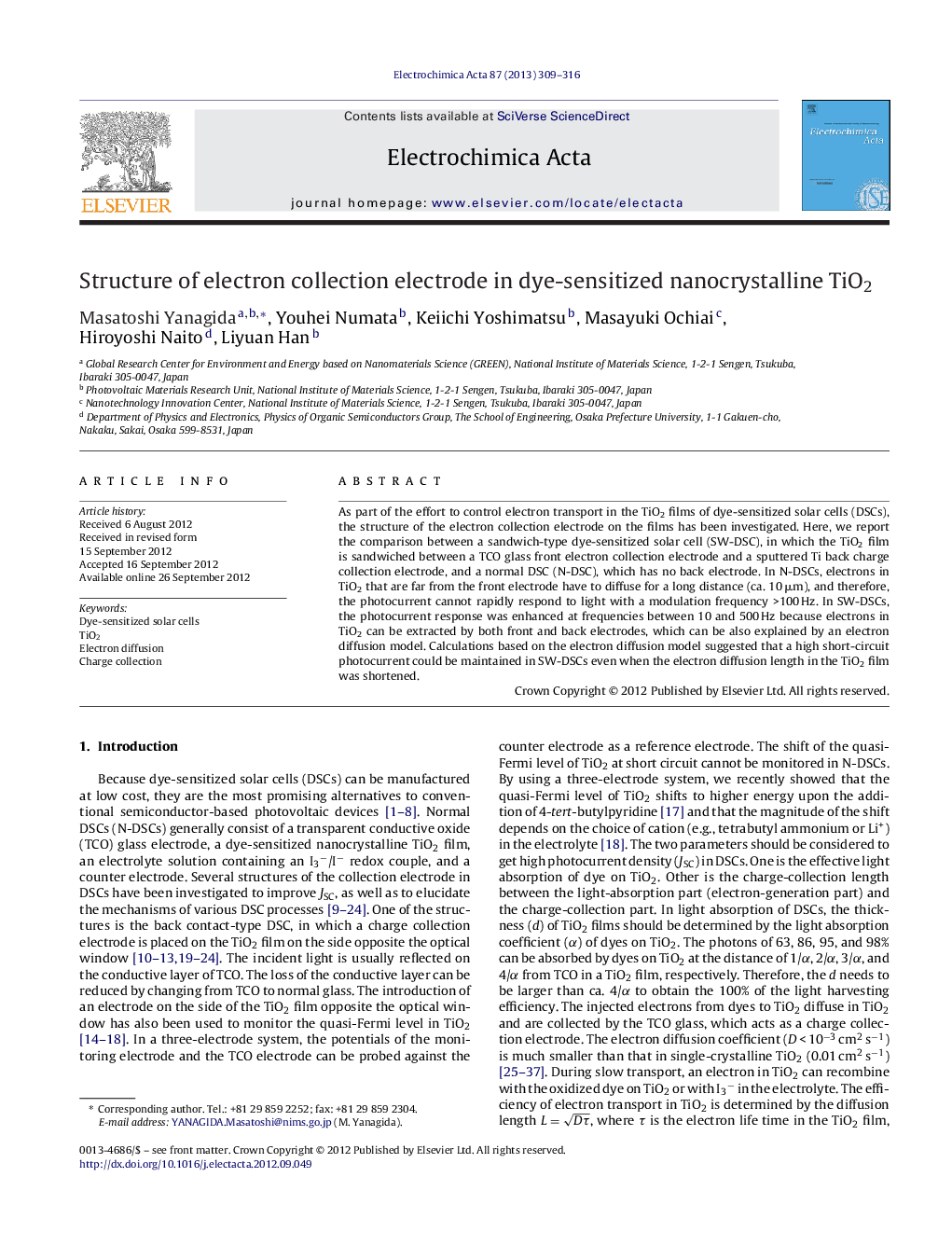| Article ID | Journal | Published Year | Pages | File Type |
|---|---|---|---|---|
| 187994 | Electrochimica Acta | 2013 | 8 Pages |
As part of the effort to control electron transport in the TiO2 films of dye-sensitized solar cells (DSCs), the structure of the electron collection electrode on the films has been investigated. Here, we report the comparison between a sandwich-type dye-sensitized solar cell (SW-DSC), in which the TiO2 film is sandwiched between a TCO glass front electron collection electrode and a sputtered Ti back charge collection electrode, and a normal DSC (N-DSC), which has no back electrode. In N-DSCs, electrons in TiO2 that are far from the front electrode have to diffuse for a long distance (ca. 10 μm), and therefore, the photocurrent cannot rapidly respond to light with a modulation frequency >100 Hz. In SW-DSCs, the photocurrent response was enhanced at frequencies between 10 and 500 Hz because electrons in TiO2 can be extracted by both front and back electrodes, which can be also explained by an electron diffusion model. Calculations based on the electron diffusion model suggested that a high short-circuit photocurrent could be maintained in SW-DSCs even when the electron diffusion length in the TiO2 film was shortened.
